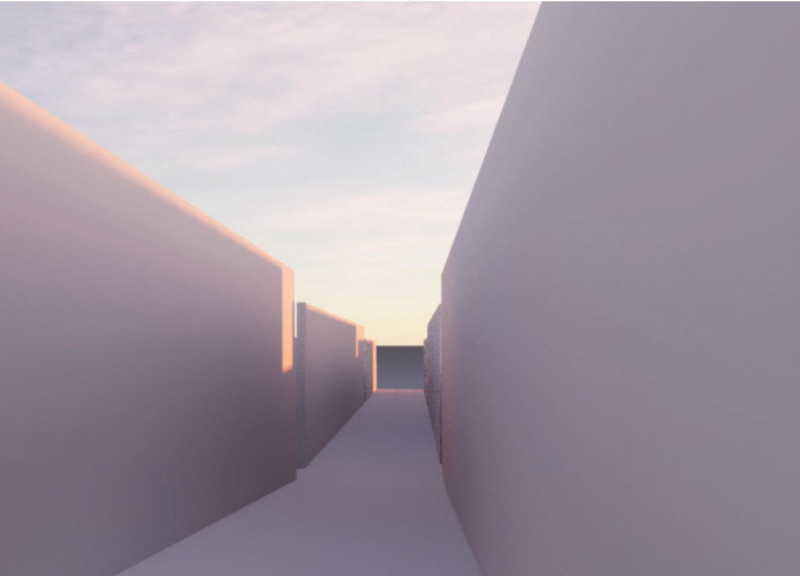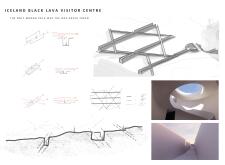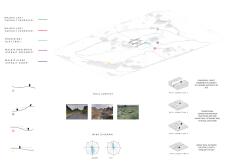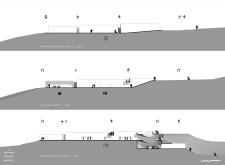5 key facts about this project
The Iceland Black Lava Visitor Centre is located in the breathtaking landscapes of Iceland, an area famous for its unique geological formations and natural beauty. It aims to facilitate exploration while allowing visitors to connect deeply with the surrounding environment. The design focuses on creating a series of pathways and spaces that encourage engagement with the landscape while addressing various visitor needs.
Pathway Design and Materiality
The centre includes multiple types of pathways, each with its own surface treatment. These consist of Malbik Lagt, labeled "asphalt proposed"; Óhrein Indi, referred to as a "dirt trail"; Malbik Undirbúið, meaning "asphalt prepared"; and Malbik Eldra, known as "asphalt older." This careful selection of materials guides visitors in their choices based on their abilities and preferences, emphasizing the centre’s goal of accessibility.
Environmental Integration
Responding to the environment is a key aspect of the design. A wind diagram has been incorporated to consider seasonal changes, especially between January and July. This attention to weather conditions ensures comfort and safety for visitors throughout the year. It enhances the experience, as guests navigate the site amid Iceland's varied climate.
Site Context and Features
The visitor centre is positioned near significant geographical points such as Lake Mývatn and Hverfjall Volcano, which enriches opportunities for exploration and learning. It features several hiking routes, including the Main Ring, Little Ring, Scenic Route, Large Ring, and Lava Fields. This variety accommodates different skill levels and encourages people to engage with the natural diversity of the area.
Functional Spaces
Inside the visitor centre, functional areas are planned to support the overall visitor experience. There is an information section for educational purposes, a café section for rest, and an exhibition space to highlight the unique characteristics of the local environment. Each element is designed to inform and engage visitors effectively.
A notable feature of the design is the retaining wall made of black lava stone. This element integrates with the landscape and enhances the connection between site and visitors. Using local stone as a building material not only gives the centre a distinct appearance but also reinforces the relationship with the natural context.






















































